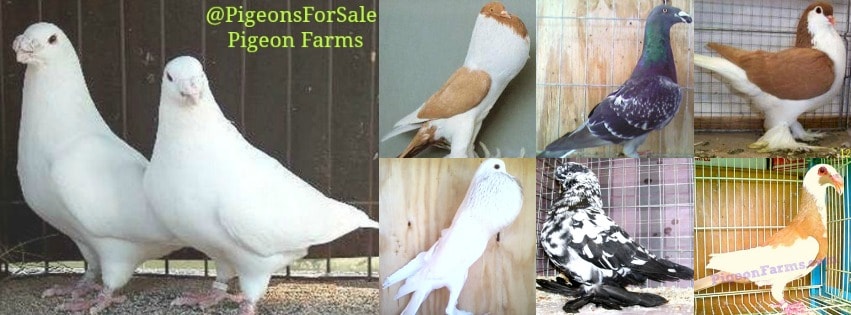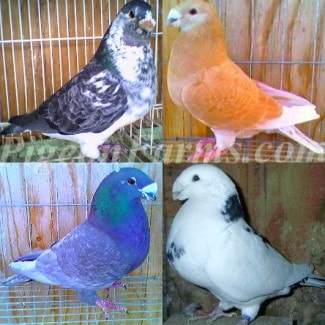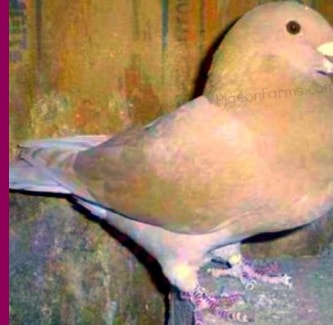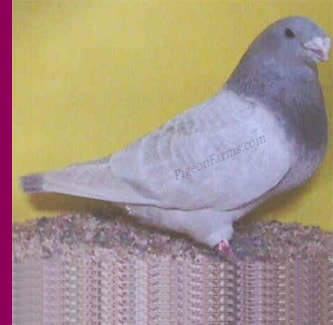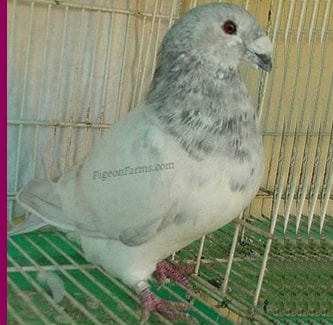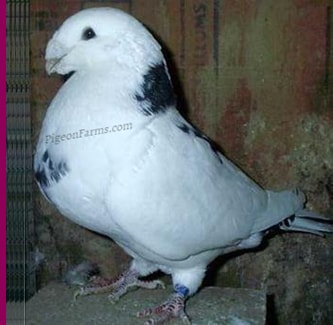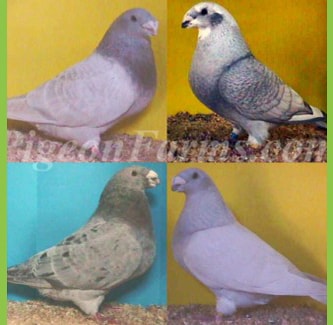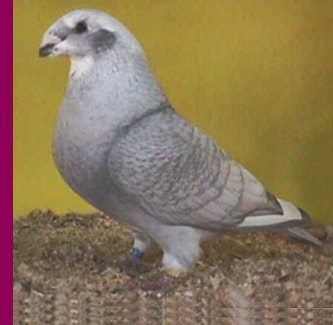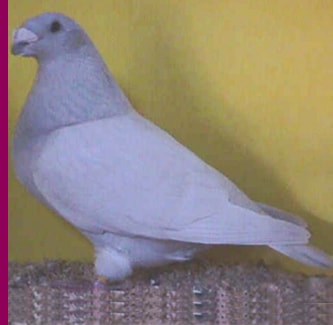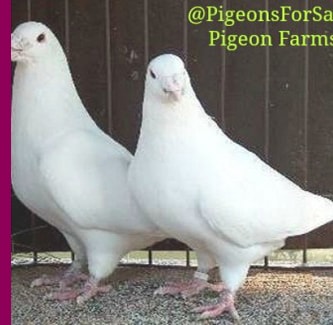Head: Profile rising gradually and smoothly in an unbroken curve from the top of the beak to the highest point just above the center of the eye, then descending gradually and smoothly, flowing into the neck and providing a full and balanced back skull. Minimum distance from the tip of the beak to the center of the eye shall be one and one-half inches. Top view must show good width at the back of the head and between the eyes, narrowing gradually from the back smoothly toward the wattle and showing no angularity in outline with no pinching between the eye and the wattle. Across the crown should be convex from above the eye on one side to above the eye on the other side. This should not be flat or square. The whole head should express strength with no sign of weakness, thinness or sharp angles. A crest is a serious fault.
Beak:
Medium in length stout and straight set. Both mandibles of nearly equal substance set smoothly into the face with no broken outline. Upper and lower mandibles should fit closely with no sign of gaping or crossing. An
imaginary line extended through the mandible seam should extend through the center of the eye. The beak may vary in color from dark in standard blue colors to amber in reds, to flesh color in Dilutes, Whites and in some Splashes and Rare’s.
Wattle:
Medium in size, smooth in texture and free from coarseness. It should fit smoothly between the head and the beak in profile and top view. Both sides should be of equal substance. In both top and front views, wattle should appear even, balanced and heart shaped with no pronounced split or feather growth between the halves. The wattle should fit smoothly with the feathers surrounding it. Any naturally exposed skin under and around the lower mandible should be small, smooth in texture, free from coarseness and not obvious to the casual glance.
Eyes:
Bright, fiery and sharp in appearance. Bright blood to dark red or chestnut preferred. Gravel, pale, broken or odd marked eyes are a serious fault. Both eyes must be the same color. Eye color to be compatible with the color and associated genetic factors of the bird. A bull eye or solid black eye is permissible in Whites and Splashes. False pearl eyes are acceptable in brown birds.
Eye Ceres:
Small, smooth, neat and finely laced, dark or plum color preferred, slightly narrower at the back of thebeye. A light or flesh colored cere is acceptable when it compliments the bird’s color such as in Dilutes, some Rare colors, Whites and/or White Splashes. Ceres should not be obvious to the casual glance.
Neck:
In profile cut straight back from bottom of the lower mandible to a throat that is free from gullet and thickness, then descending in a smooth curve to a broad chest. On the backside, it should descend from a full back skull in a slight but smooth curve, blending into broad shoulders. It should be stout, of medium length and with no sign of loose feathers or neck creases. Crescent or frill is a serious fault.
Back:
Short, flat and broad across the shoulders and tapering smoothly to the rump. Strong and well padded as it approaches the rump with no indication of indentation or weakness.
Rump Well padded and sturdy, showing no signs of weakness, flatness or excessive width, tapering smoothly into the tail slightly convex from side to side.
Vent Bones Vent bones should show strength and be fairly close to the end of the keel, allowing no more than 3/4″ between the end of the keel and the vent bones. Hens may be allowed a little leeway on this, but should not exceed 1″.
Keel:
(breastbone) shall be centered in the body and curve smoothly from the chest up toward the vent bones. It should show no wave, indentation or crookedness. It should be three to four inches in length. It should be of good structure, not prominent but fleshed out, giving the feeling of a smooth roundness from side to side. Keel should not be too deep or too shallow.
Wings Strong and powerful, held close to the body, just above the tail, with thick and fairly prominent butts. Primary and secondary flights should be wide in web, closely overlapping, with length in keeping with the size of the body. Quills should be strong and steel like. Coverts should be broad, of good length and thickness, covering well over the rump. There should be ten primary and ten secondary flights in each wing. Primary flights not completely grown out, as long as the bird is molting evenly, should not be considered a major fault. All feathers should be free from holes, fret marks and any other damage.
Tail Twelve strong feathers close fitting and overlapping to give the appearance of one feather; short in proportion to the size of the bird and extending slightly beyond the flights 1/2″ to 1″ at most and fitting smoothly into the rump.
Legs and Feet:
Free from feathers on the lower legs and feet. Feathers should be close fitting on the upper leg, at hocks and between legs. Legs should be bent at hocks with thighs well set back, strong and muscular and medium to short in length. Feet and legs should be dark to bright red. Toe nails sharp and of all the same color. Color may vary from dark to black in standard blue colored birds, to amber in Ash Reds, to flesh colored in Whites and some Splashes.
Carriage:
Carriage or Station Erect and bold, with line from the center of the eye to the tip of the tail being at about a forty-five degree angle. Tip of tail should be approximately 3/4″ from the ground. Bird should exhibit well-balanced conformation. The entire picture should be one of alertness and of proud and showy carriage.
Color/Marking:
All colors in standard color classes should be true with a clear, sharp definition of pattern, without
whiteness, lightness or smoke and with solid backs, flanks, thighs, rumps, and bellies. Refer to color guideline for more details.
Condition:
Sound, firm of flesh, neither underweight nor overweight, feathers smooth and slippery, carriage alert and vital entire picture of health and energy. Body The body as a whole presents a smoothly tapered, wedge shaped appearance that is clearly felt in the hand. It begins with a good, broad chest and tapers to a narrow rump. It should be well fleshed and solid with a feeling of strength and smoothness, not fat. It should be neither too deep nor too shallow. Size/Weight Medium size bird is preferred and when in show condition should weigh between 17 and 22 ounces. Height to be 9″ slight over or under size, or over or under weight, should not eliminate a bird if otherwise near perfection. Both judges and breeders should make a sincere effort to adhere to the standard size and weight. Behavior Cool, generally unperturbed, without undue nervousness, wildness or panting and with no flying or climbing and no excessive pacing of the judging pen. Disqualifications Judges may disqualify for sickness, trimming, deformity, and severe out of condition from dirt, disease or parasites. Color Classes Blue Bar, Blue Check, Dark Check, Black Check, Red Bar, Red Check, Grizzle, Dominant Opal, Dilute, Pied, Spread Black, Rare, Indigo/Andulusian, Recessive Opal, and Mismark.
